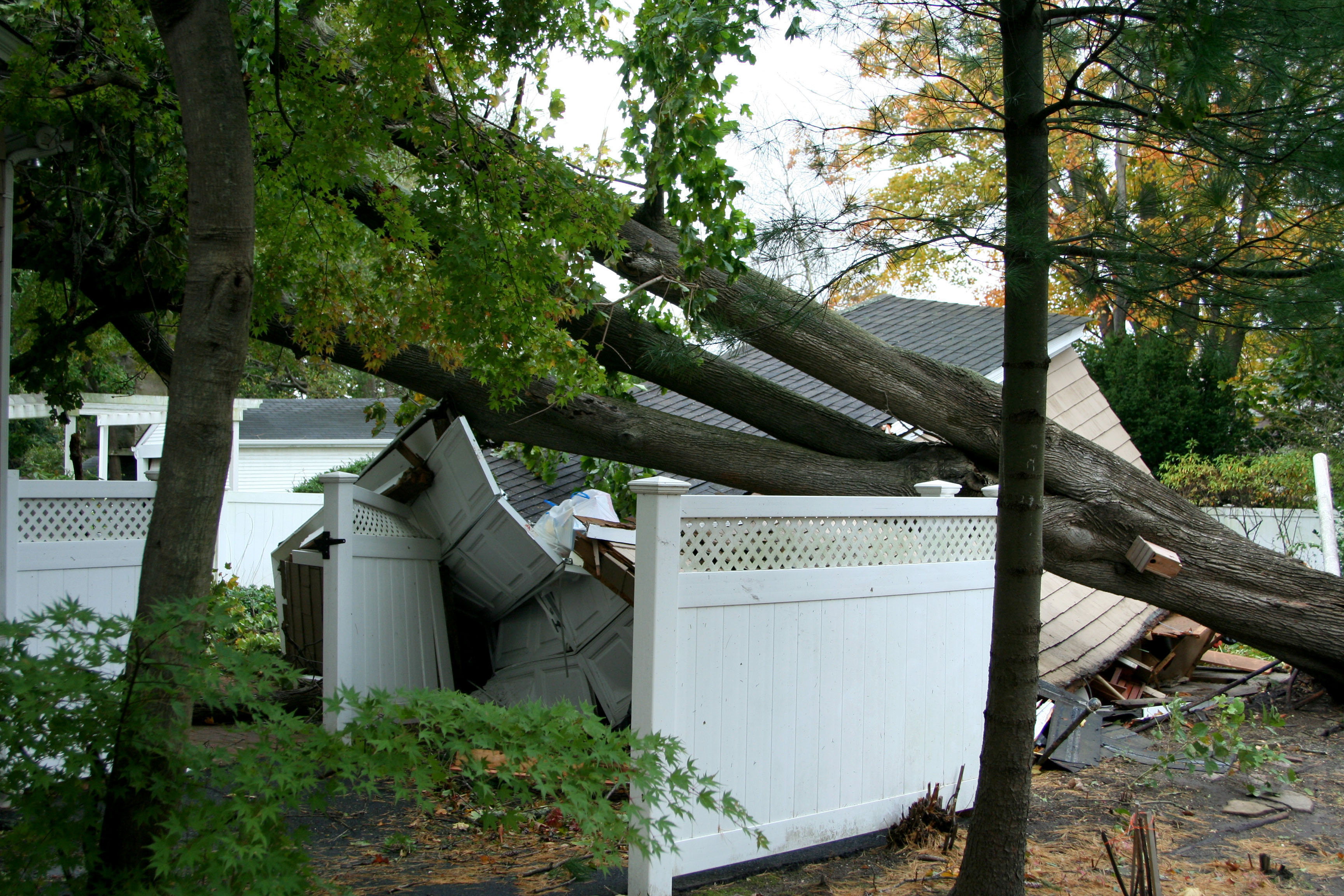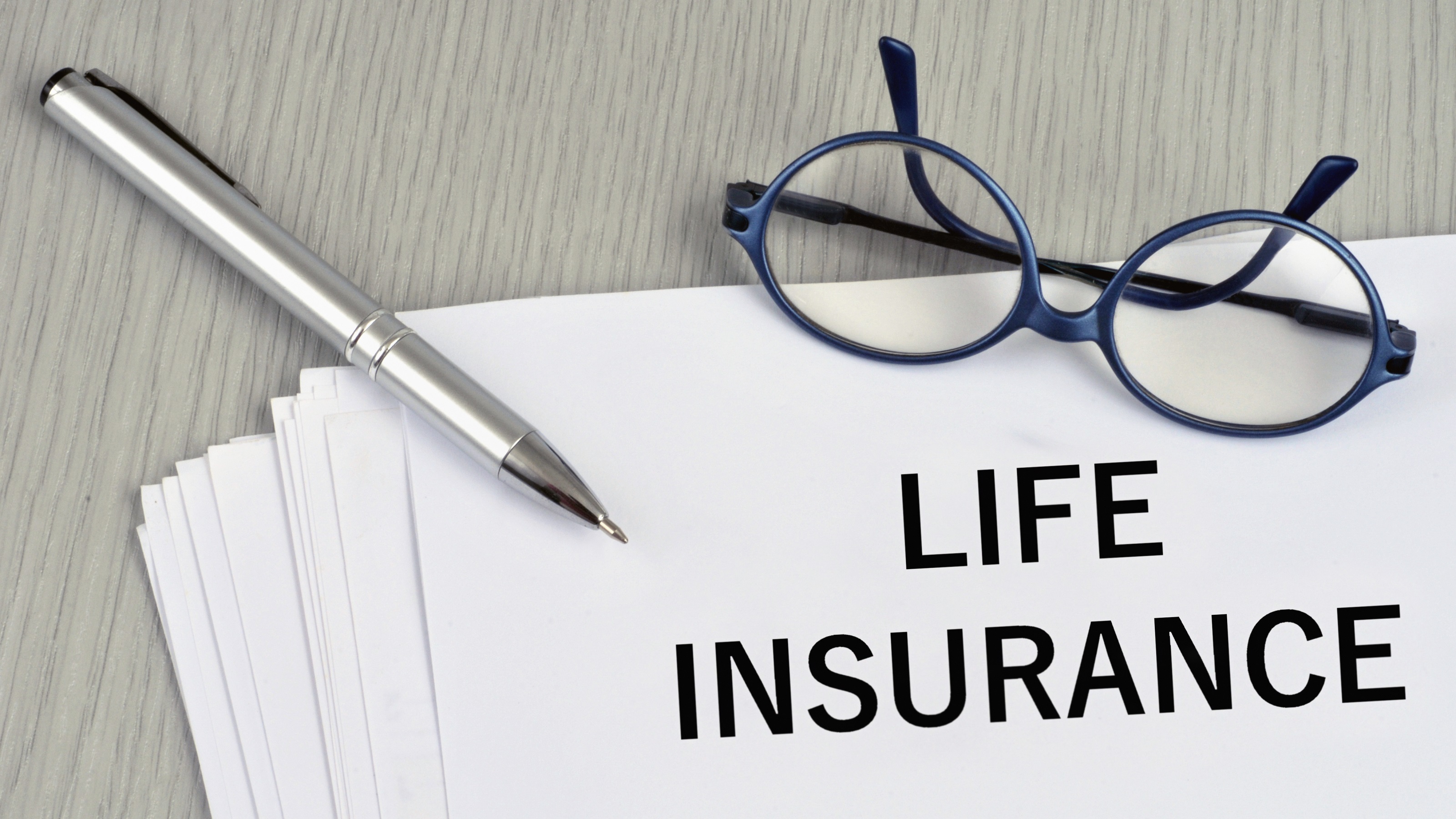Your Tree, Your Neighbor’s Property: Whose Insurance Pays?
How to be a good neighbor when your tree drops by uninvited.

Donna LeValley
Second only to the question of the sound of a tree falling in a forest is who’s on the hook when a tree falls across a property line. But the answer is fairly straightforward, at least from an insurance perspective.
If your neighbor’s property is damaged by your tree, then they should file a claim with their insurance company. If the tree damages their house or other structures (such as a garage, shed or fence), their homeowners policy will generally pay to fix the damage. If the tree damages your neighbor’s car, then their auto insurance policy’s comprehensive coverage usually pays to repair it.
Hurricanes — a frequent source of both damage and claims — can complicate things, said Mark Friedlander, director of corporate communications at the Insurance Information Institute. Sometimes, the origins of a tree limb can’t be determined, as in windstorms, in which trees, shrubs and branches can become projectiles capable of traveling great distances. “To process your claim, your insurance adjuster will typically not spend much time trying to locate exactly where the tree originally lived,” Friedlander explained.
From just $107.88 $24.99 for Kiplinger Personal Finance
Be a smarter, better informed investor.

Sign up for Kiplinger’s Free Newsletters
Profit and prosper with the best of expert advice on investing, taxes, retirement, personal finance and more - straight to your e-mail.
Profit and prosper with the best of expert advice - straight to your e-mail.
The responsibility is on the homeowner’s insurer, said Robert P. Hartwig, director of the Center for Risk and Uncertainty Management at the University of South Carolina. But he said he advises people to try to be good neighbors: The owner of the property where the tree was growing could offer to pay the insurance deductible.
Hartwig said he did this when he lived in Westchester County, N.Y., several years ago. A heavy thunderstorm with wind blew down a tree on the edge of his property. The tree was so large that it fell onto the street and destroyed part of the chain-link fence of his neighbor across the road. The elderly man who lived there was so upset, he came outside, unbuttoned his shirt to reveal a scar from years-prior open heart surgery, and exclaimed, “You’re killing me! You’re killing me!” Hartwig said he apologized and explained the man’s own homeowners insurance would cover the damage. Hartwig offered to cover the deductible, which turned out to be $500. “By the next day, he was super friendly and everything was fine,” Hartwig recalled. “And he soon got a better fence than the old one that was there.”
But a tree owner isn’t necessarily in the clear. If the tree owner is negligent in caring for the tree, sometimes the insurance company may seek reimbursement from the tree owner’s property insurer in a process called subrogation. This can happen if the tree was in poor health or not properly maintained. “If your insurer is successful in the subrogation process, you may be reimbursed for the deductible paid for the claim,” Friedlander said.
In addition to the cost of repairing an insured structure, Friedlander said homeowners policies may contribute to the cost of removing the tree itself, typically up to $500 to $1,000, depending on the insurer and the policy. But if the tree didn’t cause damage to a structure, the policy will usually not cover debris removal. In some instances, however, such as when the felled tree blocks a driveway or a ramp for the disabled, some insurers may cover that removal cost.
Finally, Friedlander added, if a falling tree or branch damages a vehicle, the optional comprehensive portion of an auto policy — the vehicle owner's — will cover that. Friedlander said about 80% of motorists in the U.S. carry comprehensive coverage.
Related Content
Profit and prosper with the best of Kiplinger's advice on investing, taxes, retirement, personal finance and much more. Delivered daily. Enter your email in the box and click Sign Me Up.
Elaine Silvestrini has worked for Kiplinger since 2021, serving as senior retirement editor since 2022. Before that, she had an extensive career as a newspaper and online journalist, primarily covering legal issues at the Tampa Tribune and the Asbury Park Press in New Jersey. In more recent years, she's written for several marketing, legal and financial websites, including Annuity.org and LegalExaminer.com, and the newsletters Auto Insurance Report and Property Insurance Report.
- Donna LeValleyRetirement Writer
-
 Don't Waste Your Money on Bad Gifts. Try This Instead.
Don't Waste Your Money on Bad Gifts. Try This Instead.Holiday Happiness These strategies, backed by behavioral finance, can help you find presents that your loved ones will truly enjoy.
-
 5 Unique Book-Inspired Trips Across America
5 Unique Book-Inspired Trips Across AmericaThere are five great trips to take across America that can immerse you in the culture of your favourite books.
-
 Amazon Resale: Where Amazon Prime Returns Become Your Online Bargains
Amazon Resale: Where Amazon Prime Returns Become Your Online BargainsFeature Amazon Resale products may have some imperfections, but that often leads to wildly discounted prices.
-
 Roth IRA Contribution Limits for 2026
Roth IRA Contribution Limits for 2026Roth IRAs Roth IRAs allow you to save for retirement with after-tax dollars while you're working, and then withdraw those contributions and earnings tax-free when you retire. Here's a look at 2026 limits and income-based phaseouts.
-
 Four Tips for Renting Out Your Home on Airbnb
Four Tips for Renting Out Your Home on Airbnbreal estate Here's what you should know before listing your home on Airbnb.
-
 Five Ways to a Cheap Last-Minute Vacation
Five Ways to a Cheap Last-Minute VacationTravel It is possible to pull off a cheap last-minute vacation. Here are some tips to make it happen.
-
 How Much Life Insurance Do You Need?
How Much Life Insurance Do You Need?insurance When assessing how much life insurance you need, take a systematic approach instead of relying on rules of thumb.
-
 When Does Amazon Prime Day End in October? Everything We Know, Plus the Best Deals on Samsonite, Samsung and More
When Does Amazon Prime Day End in October? Everything We Know, Plus the Best Deals on Samsonite, Samsung and MoreAmazon Prime The Amazon Prime Big Deal Days sale ends soon. Here are the key details you need to know, plus some of our favorite deals members can shop before it's over.
-
 How to Shop for Life Insurance in 3 Easy Steps
How to Shop for Life Insurance in 3 Easy Stepsinsurance Shopping for life insurance? You may be able to estimate how much you need online, but that's just the start of your search.
-
 Five Ways to Shop for a Low Mortgage Rate
Five Ways to Shop for a Low Mortgage RateBecoming a Homeowner Mortgage rates are high this year, but you can still find an affordable loan with these tips.